
Tee Pee Zee Redux
Tee Pee Zee Redux 080410
The Fringe on TPZ: A general overview with particular attention to our own, very special HSRA!
Tee Pee Zee 1 & 2 are HERE.
The Sierra County Board of Supervisors met on Tuesday, 080310 to hold a public comment period and then prepare to pass a new ordinance governing Timber Production Zone. The Board, working with the Planning Commission and a network of good old boys, has been working for 4 years to get the ordinance passed. Get the Board Packet HERE
The hearing began with a bitter lament from Director of Planning and Building, explaining that this version of the ordinance had been approved by the Planning Commission, and handed around the county to the assumed players, including Sierra Pacific Industries and High Sierra Rural Alliance. Mr. Beals expressed frustration with the process which should have taken only a few months, but players kept emerging with issues. The most recent came from HSRA.
In review, in the 1970s California instructed the counties to determine what parcels were viable timber production land and to put that property into Timber Production Zones unless the property owner put up a fuss. The kicker is that TPZ gives the property owner a tax break. In the 1980s the Timber Productivity Act was passed, fine tuning the state’s intent.
The zoning allows for much lower taxes, since the value shifts to the value of the trees. Unlike Williamson act for agriculture, TPZ doesn’t reimburse counties for lost taxes.
There are a couple of points of greatest contention about TPZ. Those are parcel size, and residences.
Purists on the one side insist that the landowner doesn’t give up the right to a residence. They maintain the key point in the law is that any subsequent use not infringe on the ability to grow and harvest trees.
In Humboldt county, the issue has been very contentious, with groups arranged in surprising ways on the issue. There, the motor force was the rape and then abandonment of Pacific Lumber land, which created the specter of quarter sections of TPZ land sold off as “estates”.
There, the controversy split communities that had been united against timber harvest excess. It also pitted young, primarily landless, “carbon footprint” enviros against older enviros who had homestead land.
To be clear, in Sierra County, we have General Forest zone, which would allow a house with a permit. If a parcel owner wanted to, they could remove their parcel from TPZ (in agreement with the county) and build the house.
But, General Forest sucks. It requires landowners to make changes to meaningfully split a parcel. The same trees grow, and will eventually be harvested, but the landowner gets no tax break.
Likewise, if a TPZ parcel owner does build a house on the parcel, the acre or two around the house is taxed at a much higher rate, as is the house.
But, here as in Humboldt, there is anxiety on the part of some, because TPZ land doesn’t bring in much money if no one is cutting trees, and because there is a kind of resentment on the part of many that “some rich guy can build a mansion” and instead of paying through the nose on taxes, would get a tax break. He could play golf (if he’ll play through trees), create a hunting preserve, even conduct tours and not pay much in taxes.
If it were really taxes we were worried about, we’d consider leaving the parcel in TPZ and taxing the hell out of the house, and further, encourage the owner to put in stables and take 10 acres out of TPZ. On the other hand, if we’re just resentful, we’ll discourage the owner from doing anything unless he’ll pay through the nose.
The local ordinance would call for 640 acre minimum split parcel size. Parcels 80 acres or larger can have a residence. That satisfied most people present at the Board hearing, and it satisfied a group of old boys the county got together to act as a council of cardinals over the matter. Sierra Pacific Lumber sent a letter (HERE) which interpreted the law as broadly as possible, but there still could have been an easy pass to the ordinance except for High Sierra Rural Alliance.
There are those in the county who literally can not speak of HSRA without breaking in to profanities. That, at least, has to please someone at HSRA, since the obvious goal of the group increasingly seems to be to bring the county to a stop, just when it is struggling up a seemingly insurmountable grade, and to consternate everyone.
As is common of the group, they did a “document dump” on the county at closing on the night before the hearing. This was intended to stall the county, and it did, after a fashion.
Staff asked for time to wade through the 180 pages of the document, but there was a letter with the documents which seems to contain the meat of their argument. You can find that letter HERE.
While SPI relied on the law they knew, timber law, HSRA relies on the law they know, CEQA. The discussion begins:
The proposed ordinance is inconsistent with the Sierra County General Plan in that it permits large acreage estate residential uses on TPZ parcels without the requirement to make a finding the residence is necessary for timber management. It also allows the subdivision of TPZ parcels in and near community areas to 160 acres.
This paragraph nicely outlines what follows. HSRA doesn’t want a house on every 160 acres of Sierra County. The Board is about to allow large acreage estate residential use, meaning someone can buy a hunk of land and build a house and leave the land TPZ.
Above all, HSRA wants oversight, by hijacking CEQA in the courts over the uses of timberlands in the county. To be specific, they want the burden of proof to fall on the individual, instead of the county, when it comes to things like small TPZ parcels and homes.
HSRA frequently states the new ordinance is in conflict with the General Plan. Clearly, we need to change the General Plan. The State intended to protect timber-producing land. The intent was to discourage splitting of large parcels, but mostly it was to encourage timber production. The state wants a reliable source of trees, even as Rome did, and later the British empire did. There is little to confuse about that.
HSRA intends that the county have oversight, and that CEQA be invoked, before letting land out of TPZ.
Let’s enjoy some more of HSRA’s prose:
The General Plan EIR refers to TPZ parcels as “non-residential”.
Just as SPI interpreted the timber law as broadly as possible, HSRA interprets building language as narrowly as possible. “Residential” simply means that one or two acres are withdrawn from TPZ and taxed normally, it doesn’t mean to imply the entire parcel should be rezoned. This isn’t “spot zoning,” it’s a proper adjustment for land use.
Taking the letter sequentially, we find:
We believe there is broad agreement amongst County residents, reflected in the County’s General Plan Theme and Goals, for a land use pattern which is a system of distinct and cohesive rural clusters amid open lands. Such a pattern increases the vitality of communities and preserves the viability of resource production and preservation. It is the exact opposite of sprawl.
First of all, broad agreement for HSRA anything has largely vanished from the county. Even those moderates who used to support the group have withdrawn, and a land rights group has sprung up in the county, not only in response to HSRA, but to other land rights threats, too.
Secondly, it is unlikely that any of the broad supporters of the general plan agree that someone who owns a hundred acres of timberland should either not own a home or clearcut his land. GF is a sucky designation which gives the State and the County the money from the trees when they are sold, in addition to on-going taxes.
So, we disagree that there is broad support for HSRA’s vision for our county.
What is that vision? Cities! HSRA wants everyone to live in a city. No homesteaders in the hills, no “estates” paying taxes.
Consider that HSRA insists the county must cluster people because it:
--Minimizes fire hazard
--Discourages inefficient vehicle use
--Prevents growth inducement along transportation corridors inconsistent with existing land use patterns
--Allows orderly and cost effective extension of public facilities and services
--Prevents conversion of timber producing lands to other uses
--Protects habitat and species diversity
--Reduces the potential for conflicts resulting from residential development on timber production lands…
In short, every evil of modern humans can be solved by clustering, except over population and overcrowding. In truth, there is no reason to suggest that “clustering” prevents urbanites from commuting seventy-five miles to work, or from having a swimming pool and hot tub, or a million other things people do that aren’t green. It depends on the project and the landowner how much energy they’ll use or how far they’ll drive. Many rural people don’t want public services; many more are good stewards of the land they live on, which actually reduces fire.
More:
“Because the Timberland Productivity Act focuses on timber cultivation and harvest, and because it confers special tax benefits on affected lands, ancillary uses on these lands shall also…:
--Maintain existing parcel sizes or create larger parcels.
--Not be a use for which a suitable alternative site is available outside of Timberland Productivity Act contracted lands.”
From me to you, board and particularly scullery staff of HSRA: go back to Berkley! Some of us are real, honest rural people and we don’t sleep well if we see a neighbor’s lights. Some of us grew up on thousands of acres, and that’s what it takes to be comfortable. Some people are sick of other people and want to live in the middle of a section. Forcing people to rezone in order to build a home will, we suggest, either deny landowners property rights they are entitled to, or would force them to take the land out of timber production, an expensive and time consuming process especially with HSRA gumming up each attempt.
It clearly is not in anyone’s interest to insist people remove land from timber production.
The Timberland Productivity Act says (GC51101) law says:

A single house on 160 or 640 acres does not constitute encroaching civilization.
Indeed, we’ll suggest that HSRA’s dystopic vision of “clusters” of development will speed the urbanization of the county far faster than allowing homesteads on large TPZ tracts. Only HSRA’s faith in the Holy CEQA causes them to believe they can control every TPZ transaction.
HSRA begrudgingly admits a single family residence can exist on TPZ but puts the burden on the landowner to prove it’s needed.
Instead, we’ll put the burden on HSRA: where in the CALIFORNIA Timber Production Act (because we can easily change the General Plan) does it say the landowner gives up basic rights in order to grow trees? Where in the spirit of CTPA does it suggest we should discourage timber production, or disadvantage some owners because they want to build a home? The only reason to have timber land in General Forest is to shift it to a better zoning and log and parcel it up.
Again, HSRA reveals their resentment of people who can afford to build a home on a large piece of timberland, persistently referring to large-acre estate residential uses.
(w)e do not understand how allowing a residence on a parcel greater than 80 acres ensures eligible timberlands won’t be converted to large-acre estate residential uses. The potential impact of locating large acreage residential uses remote from existing clustered communities must be analyzed in an Initial Study to determine if an EIR is necessary.
We don’t see how punishing timberland owners is going to encourage timber production. Currently, California law favors HSRA’s “carbon footprint enviro” view, since the carbon footprint of projects is supposed to be calculated under a proposed law. And, it’s a great idea where people are packed cheek by jowl, but not here.

Intent of the Legislature.
And, that’s the problem as I see it. The motivators behind HSRA don’t want to live here, they want to live in clusters of people. So go there! There are millions of people in California living in clusters, go be with your kind!
The Board will, we predict, approve the ordinance as it appears in the Board packet. HSRA is scary in court, but they already have the county in court, and the emotions at the Board meeting were high: let HSRA sue! This is one we can win.
Think of it this way: Sierra County is the Independence Lake of rural people. People who really understand and can take care of timberlands are obviously getting very rare and endangered. Maybe Sierra County should be the last place they’re allowed to thrive. We don’t so much need to be protected from urbanization as from an urban point of view which thinks we need to live in “clusters.”
A neighbor on every hundred and sixty or so acres is just about the population density we like.
Cousins Speaking Up

The Board Deliberates.
HSRA did not have a representative present, only pounds of dead trees. Other people were present, though.
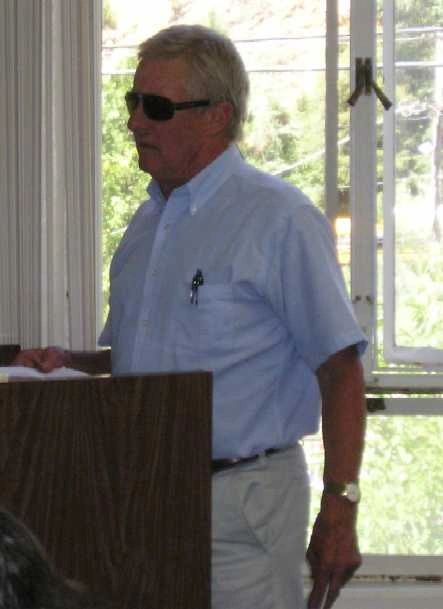
Robert Eshleman: HSRA doesn't know the law, they don't care about the community, it's an assault on the property rights of TPZ owners, pass the ordinance.

Cedric Twight, Registered Professional Forester for SPI: The forester should decide what structures are appropriate, land owners shouldn't lose rights over TPZ, interprets the law in favor of land owner.
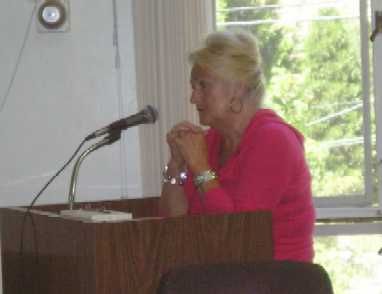
Pat Hudson: HSRA continues to bully the county.
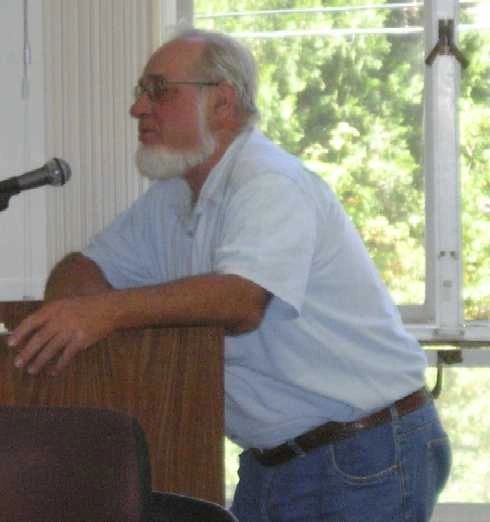
Ron Strong, retired forester: Having responsible land owners on TPZ and in the woods is a good idea, and actually reduce fire, and should not be discouraged.
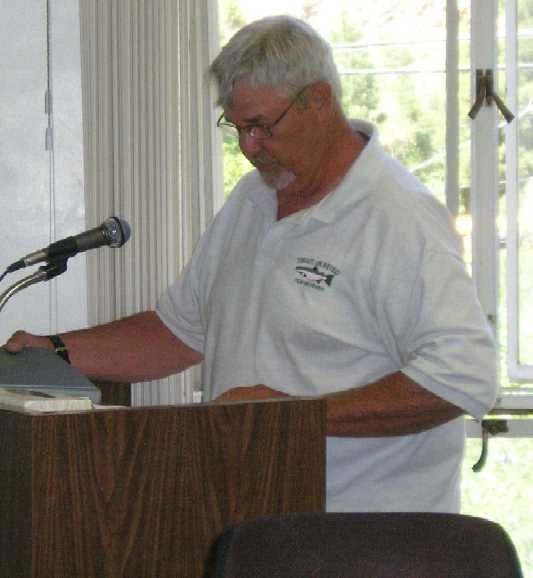
Bill Copren, admitted do-gooder, chairperson of this and member of that and past so and so, and he didn't even mention a few things, but we got the idea that in Sierra County, Bill Copren is a heavy hitter. Bill feels there should be no estates; says that some TPZ landowners are getting a free ride. He owns seven hundred acres in TPZ but still feels the county should restrict residences on TPZ.
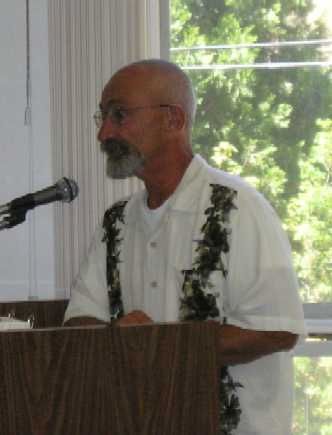
Irv Christiansen, local TPZ landowner: The time is now to adopt an ordinance so landowners know what is what.

The Room.
The Fringe on TPZ: A general overview with particular attention to our own, very special HSRA!
Tee Pee Zee 1 & 2 are HERE.
The Sierra County Board of Supervisors met on Tuesday, 080310 to hold a public comment period and then prepare to pass a new ordinance governing Timber Production Zone. The Board, working with the Planning Commission and a network of good old boys, has been working for 4 years to get the ordinance passed. Get the Board Packet HERE
The hearing began with a bitter lament from Director of Planning and Building, explaining that this version of the ordinance had been approved by the Planning Commission, and handed around the county to the assumed players, including Sierra Pacific Industries and High Sierra Rural Alliance. Mr. Beals expressed frustration with the process which should have taken only a few months, but players kept emerging with issues. The most recent came from HSRA.
In review, in the 1970s California instructed the counties to determine what parcels were viable timber production land and to put that property into Timber Production Zones unless the property owner put up a fuss. The kicker is that TPZ gives the property owner a tax break. In the 1980s the Timber Productivity Act was passed, fine tuning the state’s intent.
The zoning allows for much lower taxes, since the value shifts to the value of the trees. Unlike Williamson act for agriculture, TPZ doesn’t reimburse counties for lost taxes.
There are a couple of points of greatest contention about TPZ. Those are parcel size, and residences.
Purists on the one side insist that the landowner doesn’t give up the right to a residence. They maintain the key point in the law is that any subsequent use not infringe on the ability to grow and harvest trees.
In Humboldt county, the issue has been very contentious, with groups arranged in surprising ways on the issue. There, the motor force was the rape and then abandonment of Pacific Lumber land, which created the specter of quarter sections of TPZ land sold off as “estates”.
There, the controversy split communities that had been united against timber harvest excess. It also pitted young, primarily landless, “carbon footprint” enviros against older enviros who had homestead land.
To be clear, in Sierra County, we have General Forest zone, which would allow a house with a permit. If a parcel owner wanted to, they could remove their parcel from TPZ (in agreement with the county) and build the house.
But, General Forest sucks. It requires landowners to make changes to meaningfully split a parcel. The same trees grow, and will eventually be harvested, but the landowner gets no tax break.
Likewise, if a TPZ parcel owner does build a house on the parcel, the acre or two around the house is taxed at a much higher rate, as is the house.
But, here as in Humboldt, there is anxiety on the part of some, because TPZ land doesn’t bring in much money if no one is cutting trees, and because there is a kind of resentment on the part of many that “some rich guy can build a mansion” and instead of paying through the nose on taxes, would get a tax break. He could play golf (if he’ll play through trees), create a hunting preserve, even conduct tours and not pay much in taxes.
If it were really taxes we were worried about, we’d consider leaving the parcel in TPZ and taxing the hell out of the house, and further, encourage the owner to put in stables and take 10 acres out of TPZ. On the other hand, if we’re just resentful, we’ll discourage the owner from doing anything unless he’ll pay through the nose.
The local ordinance would call for 640 acre minimum split parcel size. Parcels 80 acres or larger can have a residence. That satisfied most people present at the Board hearing, and it satisfied a group of old boys the county got together to act as a council of cardinals over the matter. Sierra Pacific Lumber sent a letter (HERE) which interpreted the law as broadly as possible, but there still could have been an easy pass to the ordinance except for High Sierra Rural Alliance.
There are those in the county who literally can not speak of HSRA without breaking in to profanities. That, at least, has to please someone at HSRA, since the obvious goal of the group increasingly seems to be to bring the county to a stop, just when it is struggling up a seemingly insurmountable grade, and to consternate everyone.
As is common of the group, they did a “document dump” on the county at closing on the night before the hearing. This was intended to stall the county, and it did, after a fashion.
Staff asked for time to wade through the 180 pages of the document, but there was a letter with the documents which seems to contain the meat of their argument. You can find that letter HERE.
While SPI relied on the law they knew, timber law, HSRA relies on the law they know, CEQA. The discussion begins:
The proposed ordinance is inconsistent with the Sierra County General Plan in that it permits large acreage estate residential uses on TPZ parcels without the requirement to make a finding the residence is necessary for timber management. It also allows the subdivision of TPZ parcels in and near community areas to 160 acres.
This paragraph nicely outlines what follows. HSRA doesn’t want a house on every 160 acres of Sierra County. The Board is about to allow large acreage estate residential use, meaning someone can buy a hunk of land and build a house and leave the land TPZ.
Above all, HSRA wants oversight, by hijacking CEQA in the courts over the uses of timberlands in the county. To be specific, they want the burden of proof to fall on the individual, instead of the county, when it comes to things like small TPZ parcels and homes.
HSRA frequently states the new ordinance is in conflict with the General Plan. Clearly, we need to change the General Plan. The State intended to protect timber-producing land. The intent was to discourage splitting of large parcels, but mostly it was to encourage timber production. The state wants a reliable source of trees, even as Rome did, and later the British empire did. There is little to confuse about that.
HSRA intends that the county have oversight, and that CEQA be invoked, before letting land out of TPZ.
Let’s enjoy some more of HSRA’s prose:
The General Plan EIR refers to TPZ parcels as “non-residential”.
Just as SPI interpreted the timber law as broadly as possible, HSRA interprets building language as narrowly as possible. “Residential” simply means that one or two acres are withdrawn from TPZ and taxed normally, it doesn’t mean to imply the entire parcel should be rezoned. This isn’t “spot zoning,” it’s a proper adjustment for land use.
Taking the letter sequentially, we find:
We believe there is broad agreement amongst County residents, reflected in the County’s General Plan Theme and Goals, for a land use pattern which is a system of distinct and cohesive rural clusters amid open lands. Such a pattern increases the vitality of communities and preserves the viability of resource production and preservation. It is the exact opposite of sprawl.
First of all, broad agreement for HSRA anything has largely vanished from the county. Even those moderates who used to support the group have withdrawn, and a land rights group has sprung up in the county, not only in response to HSRA, but to other land rights threats, too.
Secondly, it is unlikely that any of the broad supporters of the general plan agree that someone who owns a hundred acres of timberland should either not own a home or clearcut his land. GF is a sucky designation which gives the State and the County the money from the trees when they are sold, in addition to on-going taxes.
So, we disagree that there is broad support for HSRA’s vision for our county.
What is that vision? Cities! HSRA wants everyone to live in a city. No homesteaders in the hills, no “estates” paying taxes.
Consider that HSRA insists the county must cluster people because it:
--Minimizes fire hazard
--Discourages inefficient vehicle use
--Prevents growth inducement along transportation corridors inconsistent with existing land use patterns
--Allows orderly and cost effective extension of public facilities and services
--Prevents conversion of timber producing lands to other uses
--Protects habitat and species diversity
--Reduces the potential for conflicts resulting from residential development on timber production lands…
In short, every evil of modern humans can be solved by clustering, except over population and overcrowding. In truth, there is no reason to suggest that “clustering” prevents urbanites from commuting seventy-five miles to work, or from having a swimming pool and hot tub, or a million other things people do that aren’t green. It depends on the project and the landowner how much energy they’ll use or how far they’ll drive. Many rural people don’t want public services; many more are good stewards of the land they live on, which actually reduces fire.
More:
“Because the Timberland Productivity Act focuses on timber cultivation and harvest, and because it confers special tax benefits on affected lands, ancillary uses on these lands shall also…:
--Maintain existing parcel sizes or create larger parcels.
--Not be a use for which a suitable alternative site is available outside of Timberland Productivity Act contracted lands.”
From me to you, board and particularly scullery staff of HSRA: go back to Berkley! Some of us are real, honest rural people and we don’t sleep well if we see a neighbor’s lights. Some of us grew up on thousands of acres, and that’s what it takes to be comfortable. Some people are sick of other people and want to live in the middle of a section. Forcing people to rezone in order to build a home will, we suggest, either deny landowners property rights they are entitled to, or would force them to take the land out of timber production, an expensive and time consuming process especially with HSRA gumming up each attempt.
It clearly is not in anyone’s interest to insist people remove land from timber production.
The Timberland Productivity Act says (GC51101) law says:

A single house on 160 or 640 acres does not constitute encroaching civilization.
Indeed, we’ll suggest that HSRA’s dystopic vision of “clusters” of development will speed the urbanization of the county far faster than allowing homesteads on large TPZ tracts. Only HSRA’s faith in the Holy CEQA causes them to believe they can control every TPZ transaction.
HSRA begrudgingly admits a single family residence can exist on TPZ but puts the burden on the landowner to prove it’s needed.
Instead, we’ll put the burden on HSRA: where in the CALIFORNIA Timber Production Act (because we can easily change the General Plan) does it say the landowner gives up basic rights in order to grow trees? Where in the spirit of CTPA does it suggest we should discourage timber production, or disadvantage some owners because they want to build a home? The only reason to have timber land in General Forest is to shift it to a better zoning and log and parcel it up.
Again, HSRA reveals their resentment of people who can afford to build a home on a large piece of timberland, persistently referring to large-acre estate residential uses.
(w)e do not understand how allowing a residence on a parcel greater than 80 acres ensures eligible timberlands won’t be converted to large-acre estate residential uses. The potential impact of locating large acreage residential uses remote from existing clustered communities must be analyzed in an Initial Study to determine if an EIR is necessary.
We don’t see how punishing timberland owners is going to encourage timber production. Currently, California law favors HSRA’s “carbon footprint enviro” view, since the carbon footprint of projects is supposed to be calculated under a proposed law. And, it’s a great idea where people are packed cheek by jowl, but not here.

Intent of the Legislature.
And, that’s the problem as I see it. The motivators behind HSRA don’t want to live here, they want to live in clusters of people. So go there! There are millions of people in California living in clusters, go be with your kind!
The Board will, we predict, approve the ordinance as it appears in the Board packet. HSRA is scary in court, but they already have the county in court, and the emotions at the Board meeting were high: let HSRA sue! This is one we can win.
Think of it this way: Sierra County is the Independence Lake of rural people. People who really understand and can take care of timberlands are obviously getting very rare and endangered. Maybe Sierra County should be the last place they’re allowed to thrive. We don’t so much need to be protected from urbanization as from an urban point of view which thinks we need to live in “clusters.”
A neighbor on every hundred and sixty or so acres is just about the population density we like.
Cousins Speaking Up

The Board Deliberates.
HSRA did not have a representative present, only pounds of dead trees. Other people were present, though.

Robert Eshleman: HSRA doesn't know the law, they don't care about the community, it's an assault on the property rights of TPZ owners, pass the ordinance.

Cedric Twight, Registered Professional Forester for SPI: The forester should decide what structures are appropriate, land owners shouldn't lose rights over TPZ, interprets the law in favor of land owner.

Pat Hudson: HSRA continues to bully the county.

Ron Strong, retired forester: Having responsible land owners on TPZ and in the woods is a good idea, and actually reduce fire, and should not be discouraged.

Bill Copren, admitted do-gooder, chairperson of this and member of that and past so and so, and he didn't even mention a few things, but we got the idea that in Sierra County, Bill Copren is a heavy hitter. Bill feels there should be no estates; says that some TPZ landowners are getting a free ride. He owns seven hundred acres in TPZ but still feels the county should restrict residences on TPZ.

Irv Christiansen, local TPZ landowner: The time is now to adopt an ordinance so landowners know what is what.

The Room.
